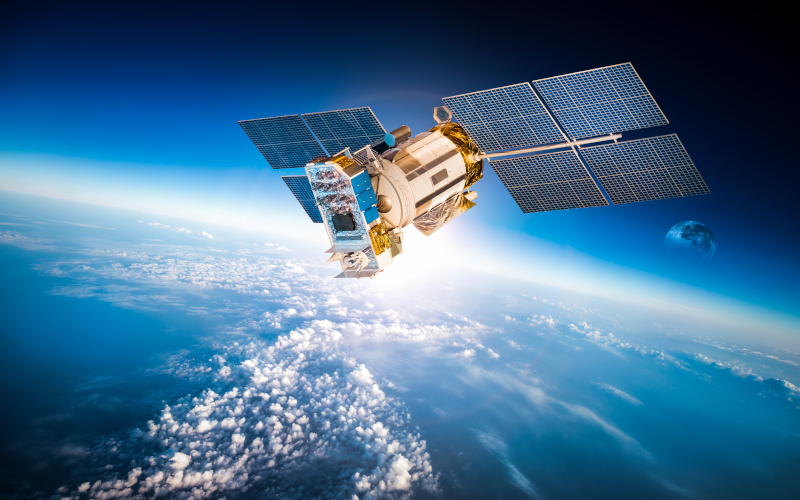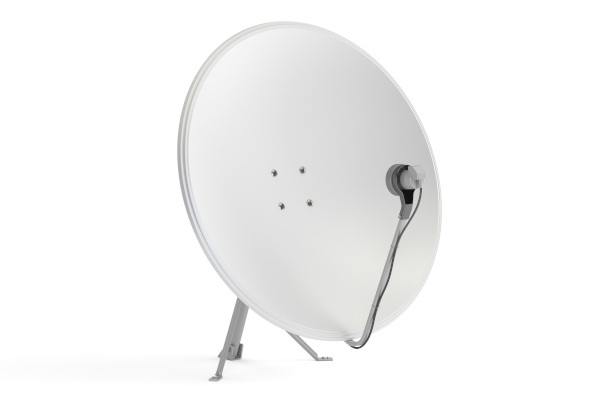ICS’S future is in the space

Today, we live in a world where everything is interconnected and where everything works through communication and, the industrial world is not an exception, as manufacturing plants are full of devices and sensors that constantly collect and send information. However, industrial environments generally present conditions that hinder the efficiency of communications. Among these difficulties, the following stand out:
- Climatic conditions. Many industrial environments end up generating extreme temperatures and very high humidity levels, which means that communication devices should be able to withstand and operate over those conditions.
- Electromagnetic interference. Another environmental challenge facing industrial communications is the electromagnetic environments in which communications technology must operate. When an electromagnetic field is exposed, the electromagnetic interferences can occur and can affect all devices with electronic circuitry, such as communication devices. As the use of the electromagnetic spectrum continues to increase and the electronic devices become more complex, the problem of electromagnetic interference becomes increasingly difficult
- Long distance transmissions. Industrial communications should often be carried out over large geographical distances. Facilitating reliable and efficient communication over such long distances in a challenge often faced by industrial communication applications.
To deal with these adversities, many companies have started to use the satellite technology known as VSAT, which uses a type of antenna that receives and transmits data and consist of small terminal that can be installed in dispersed locations to connect to a central hub thanks to a satellite. In addition, it should be noted that the size of its dishes can vary from 0.75 to 3.8 meters. Next, to better understand what VSAT is based on and what is the role of a satellite in communications, it is useful to introduce the concept of satellite communication.

- VSAT parabolic antenna -
Like the rest of satellite communications, VSAT is a data transmission technique using a communications satellite in Earth orbit, which is responsible for transmitting a signal via a transponder, creating a channel between the transmitter and receiver, which can be located in two completely different places on the planet. This brings out to the workers the possibility of being connected and work in any remote location, regardless of the distance.
Sectors such as construction, fishing, oil and gas, mining, drilling or any other activity that takes place in remote locations, where regular mobile communications might be ineffective, can make good use of satellite communication.
Advantages and disadvantages
Satellite communication has many advantages, among which the following stand out:
- Geographical coverage. Thanks to satellite communication, the geographical coverage is quite wide, especially in sparsely populated areas, so that completely different work areas scattered all over the world could communicate without major problems.
- Easy installation. Ground stations are easy to install and maintain, also, in case of relocation (e.g., due to critical weather conditions), can be easily removed and installed in another location.
- Resistance to extreme conditions. In locations prone to natural disasters or unstable weather conditions, satellite communications are of great importance, since satellite are mainly distributed over the space. In these locations, satellite communication is the only way to ensure fast, accurate and efficient transmission of the information.
However, in order to enjoy the benefits of satellite communication, it is necessary to sacrifice certain features that, in some industrial environments, could be indispensable and complicate the implementation of this technology.
- Propagation delay. In satellite communications, propagation delay, or, the time delay in the reception of transmitted signals, is unavoidable due to the long distances. Typically, the delay is about half a second for signal sent to a satellite and downlinked to the receiver, which, although it may seem insignificant, can be quite noticeable in voice communications, where it would greatly hinder the flow of conversations.
- Interferences. Although they are located thousands of kilometers from the Earth, the satellites need to be in line of sight with the receivers. The quality of satellite signals can be affected by several factors, such as weather (specially rain), obstacles (trees, branches, leaves, etc.) or whether the receiver is correctly oriented to receive the signal. In a country with a tropical climate, for example, where thunderstorms and heavy rainfall are common, the quality of service could be severely and consistently affected.
In addition to the advantages and disadvantages mentioned above, there is another factor to take into account that, depending on the specific environment, could be beneficial or detrimental to the company:
- The cost. The cost of designing, developing, investing, and securing satellites is higher compared to other communication methods, so at first glance it may seem an expensive technology. However, once the installation is done, the maintenance is very economical and, unlike other communication methods, its available the long-distance communications for a much cheaper price. Therefore, for those companies that need to make use of long-distance communications, the cost will be an advantage, while, for the rest of the cases, it will be considered as an expensive
Cybersecurity applied to satellite communications
With the expansion and increasing application of satellite communication networks, how to ensure the security of this new type of network has become the focus of attention of the world’s major powers, while attackers continue developing new ways to breach these systems and take full advantage of them, as they are a particularly attractive target from them, since their boundary is often thought to be the communication link, that is, the radio frequency link, or the terrestrial system in general. If the boundary is breached, the internal protection of the satellite becomes weak and an adversary could operate unhindered within the system similar to the early days of traditional cybersecurity, when border firewalls were the only protection against intrusion.
Currently, well-protected terrestrial computer systems are designed with defense-in-depth principles, and it appears that satellites will follow the same paradigm. Security measures will vary by segment, with controls applied in the ground and link segment being different from those in the space segment. However, there are proven security principles that transcend the segment, such as: access control, authentication, authorization, etc.
In order to comply with such security principles and due to the recent increase in cyber threats, solutions based on ‘zero trust’ protocols are being proposed for all software and systems in a satellite network. This means having to treat all system components as untrusted, a software design approach that can prevent commercial service providers from monitoring government communications. Thus, there is less concern about authorized versus unauthorized personnel operating ground stations or control rooms. Another critical component that accompanies this design, and by which the integrity of communications is assured, is the encryption of everything on a satellite communication, from the data it transmits to the commands it receives and its links to other satellites in a mesh network.
Conclusions
Satellites will continue to evolve and the number of satellites in orbit will increase considerably. As a result, more and more companies will opt for this type of network when designing their infrastructure, thus enabling companies in the most disadvantaged areas to achieve a competitive level of communications in the market.
In short, although it is true that satellite communications have been around for several decades, it is now that they are becoming more important and, due to the speed at which satellite technology is advancing, the future of this type of communications is promising, as long as we do not neglect their level of cybersecurity.









